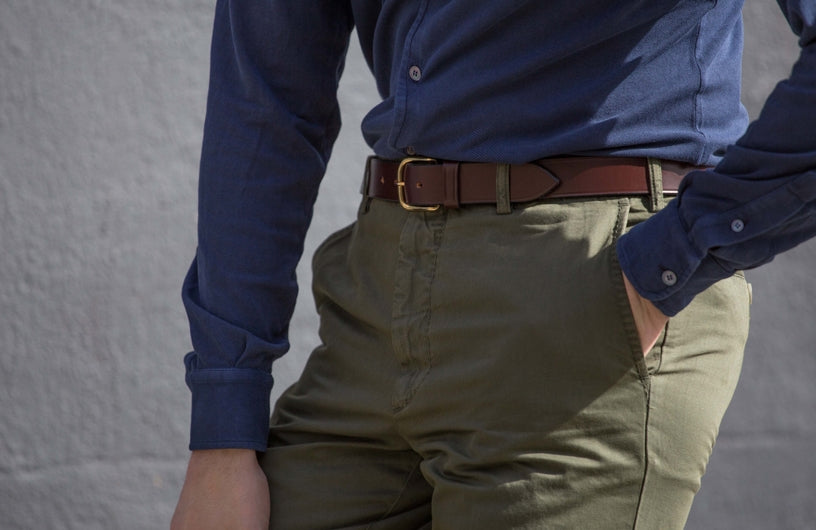2017
The Story of the Chino
By Ben St. George
Jul 13, 2022

The Rake's Ben St George looks at our cotton linen Summer chino, and works through how to wear it this season.
Everyone thinks they know the chino - that unfussy, light to mid-weight twill trouser. Their assumption into the style canon is well documented - McQueen and Newman et al saw to that with such brio that even their ill-advised appointment as American office wear de rigueur couldn’t unseat them. But where did they actually come from? And why do they remain so incessantly relevant?

To find the answer we need to look back to the Nineteenth Century, during the British occupation of India. In 1846 a battalion commander by the name of Sir Harry Lumsden, bright spark that he was, came upon the idea that the striking scarlet tunics of the British forces were perhaps not the most subtle uniforms when blending in with the local terrain - or any terrain. Not only that, but the standard issue woolen trousers were hot and uncomfortable. He just wasn’t having it. So he began dying the uniforms of his troops using a dye from the local mazari plant, giving the uniforms a soft, earthy colour. He named this colour after the Hindu word for dust - khaki. The trousers he replaced with, initially, pyjama bottoms. Flat fronted, made from breathable cotton drill, and offering much improved freedom of movement, they were an instant success. Soon Lumsden had his unit outfitted in cotton trousers, and within two years all of the colonial forces in British India had the same.
The origin of the name chino comes from another conflict, 1898’s Spanish American war. Following conflict in the islands of the Philippines, U.S. Army soldiers returned to America praising the lightweight, Chinese-crafted cotton trousers they had worn during their service there. The Philippines, as a former colony, was still primarily Spanish-speaking, and colloquially these garments were called Chinese pants, or pantalones chinos. Within four years the chino would become standard issue for the U.S. Army as well.

And that history gives us some clue as to their lasting appeal. They are the fulcrum from which military tailoring pivots from the ceremonial to the utilitarian; a garment informed by traditional modes of dress and yet reinterpreted into something that also serves an explicit function. And that function - offering a trouser that is tailored but that also offers comfort and breathability - is just as relevant when dressing today. Whether in traditional khaki, a service-inspired olive green or even a rich navy, they pair effortlessly with a broad spectrum of warm weather pieces. A polo for those hottest of days. A smart linen button-down, perhaps, when exploring the sun-bleached streets of some European seaside town. A field jacket when travelling - can’t go past those extra pockets. A light, tailored jacket when the need or dress code arises. All work effortlessly with the humble chino - one of the military’s greatest and most underrated gifts to dressing, and truly the canvas around which summer dressing is built.


